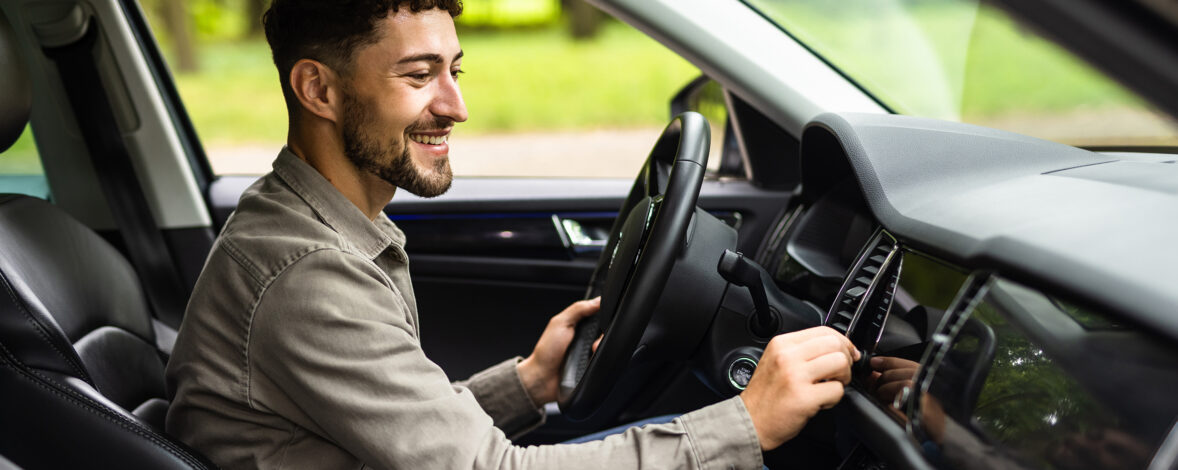(This article was originally published on Forbes.com)
Most drivers have probably noticed that there are often little, innocuous plastic covers or plugs on their cars’ dashboards or center consoles where one might expect to find a button. We don’t give them much thought because they blend into the vehicle’s interior décor. But they also serve a vital purpose; they act as placeholders to address “what if?”
What if one day you prefer a different control for your entertainment? What if you wanted to add a different kind of port for your smartphone? What if you want to allow drivers to add customization features we haven’t yet imagined? And what if you want to add a feature that doesn’t have to be specific to that vehicle because that little empty slot is partner-agnostic? What if?
Allowing for physical customizations has always been a strength of original equipment manufacturers (OEMs), even if very few of us have ever done anything with those tiny plugs. But the industry hasn’t been quite as visionary when it comes to enabling digital flexibility.
Driver Expectations
Given the high consumer demand for personalization, it clearly is an opportunity that OEMs could capitalize on. Just consider the numbers:
- Conditioned by online experiences where they can get pretty much anything they want customized to their preferences, 76% of consumers today say they are more likely to consider purchasing from brands that personalize than those that don’t, according to McKinsey.
- The same holds true in the automotive industry, where another McKinsey study found that 1 in 3 electric vehicle (EV) buyers regretted a lack of options for personalized configurations.
- Looking ahead, most (83%) car buyers believe automated profile personalization should become standard in all vehicles (not just luxury cars), and 4 in 5 purchasers would like to have more automated personalization features, according to a Sonatus survey.
Designing vehicles with digitally powered personalization features isn’t easy, which may be why automakers and their suppliers have been slow to do it. Indeed, most customization options today are confined to functionalities within individual electronic control units (ECUs), which are hardware boxes and their associated software that perform single functions like operating the windows, adjusting climate controls or applying different levels of braking pressure.
While that black box (it is literally usually black) may give the illusion of delivering personalized options, it’s actually very limited, difficult to manage and a barrier to upgradability.
Adopting A “Software-First” Mindset
Achieving real personalization—the kind most drivers desire—requires an entirely different mindset. Instead of designing vehicles’ structures first and treating software as an afterthought, automakers and their ecosystem need to think in software-defined terms.
This means that many parts of a software-defined vehicle (SDV) with different user preferences must be designed to be software configurable. Suspension, sunroofs, seat adjustments, windows, wipers, lights, dashboard UI—anything and everything a driver might want to make run faster, slower, harder, easier, brighter, dimmer, louder or softer—should be engineered with software controllability and observability in mind.
From a technical standpoint, this suggests a few things. First, ECUs that control various vehicle functions must support communication protocols and APIs to make them accessible and controllable. While the existing unified diagnostic services (UDS) protocol provides some of those capabilities, its rigid and less adaptable nature makes it unsuitable for the evolving needs of SDVs.
The emerging service oriented vehicle diagnostics (SOVD) standard offers a more flexible and interoperable approach to accessing ECU functions, data and diagnostics. Automotive OEMs and their suppliers should adopt such standards to make vehicles more software-driven.
Second, you need an architecture that lets different vehicle software services interwork with one another. Many OEMs are adopting service-oriented architecture (SOA), which allows services running on different ECUs and subsystems to connect with each other for richer and more advanced functionalities. Having a consistent framework in place from the beginning helps ensure the efficiency, usability and security of software systems, which enhances driving experiences and enables more configurability.
Finally, automakers and their suppliers must ensure the vehicle software architecture can support iterative and rapid development and deployment through over-the-air (OTA) updates. Software portability and reusability are critical here, and this is possible by using modern operating systems, virtualization, hypervisors and containers. This also allows applications to run side-by-side in isolation, easily configurable and controllable, without interfering with each other on common hardware.
Staying In The Driver’s Seat
The transformative potential of a software-first approach to revolutionize the automotive industry cannot be overstated. The road ahead might be lined with speed bumps, but it’s also brimming with opportunities for innovation and growth.
By embracing a collaborative and forward-thinking mindset, automakers and their suppliers can collectively shape a future where every consumer truly believes they’re in the driver’s seat when planning the “what if” of their motoring experience.
Learn how Sonatus Vehicle Platform, Products and Solutions enable OEMs to deliver personalized driving experiences to their customers quickly and cost-effectively on in this Driving Innovation podcast episode.
